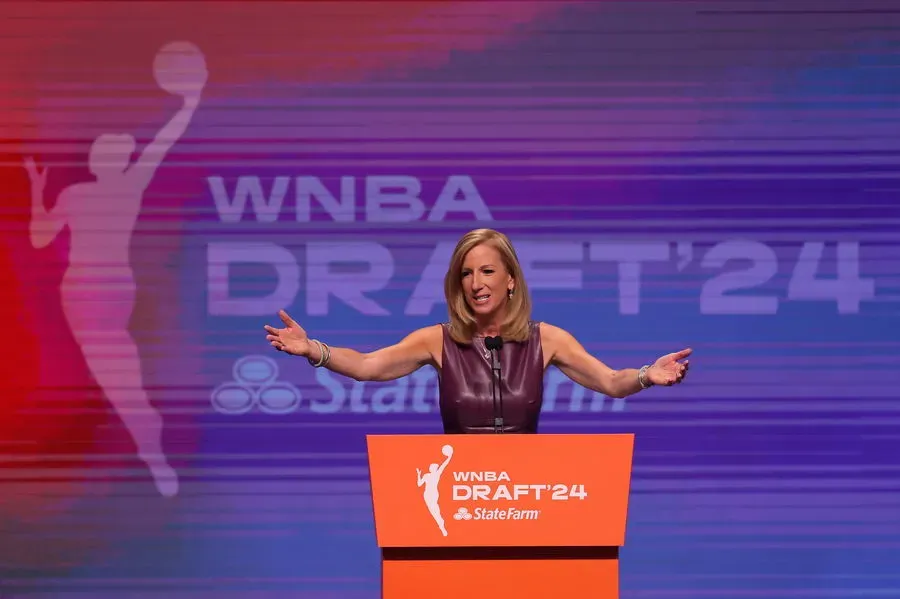WNBA Draft eligibility is a crucial topic for both aspiring professionals and fans of women’s basketball. Under current regulations, American players must complete four years of college before they can enter the league, except for those who turn 22 during the draft year. This limitation has sparked conversations among athletes and executives alike, particularly with rising stars like Paige Bueckers and Sarah Strong capturing attention in college basketball. As collegiate talent flourishes, the debate intensifies over whether players should have the option of early entry into the WNBA Draft. With such dynamic young athletes making headlines, the future of the league is intertwined with the evolving rules surrounding player eligibility.
The prerequisites for entering the WNBA Draft represent a significant aspect of women’s basketball, impacting both players’ professional journeys and the league itself. The current eligibility guidelines stipulate that American-born players must complete a minimum of four years at the collegiate level, creating a stark contrast with foreign players who have different entry options based on their background. This divide has led to considerable discourse around the merits and drawbacks of such regulations, especially with notable talents like Paige Bueckers and emerging prospects like Sarah Strong paving their paths in the college arena. As women’s basketball continues to grow in popularity, understanding these early entry guidelines becomes essential for fans and aspiring athletes alike. The rules surrounding draft eligibility not only shape player careers but also influence the WNBA’s competitive landscape.
Understanding WNBA Draft Eligibility
WNBA Draft eligibility has specific criteria that players must meet in order to be considered for selection in the league. According to the current collective bargaining agreement, American-born players can enter the draft only after completing four years of college basketball. However, there is an exception: if a player is 22 years old during the calendar year of the draft and declares after their junior season, they can be eligible. This structured timeline ensures that athletes have sufficient collegiate experience before making the transition to professional play.
The dilemma of eligibility isn’t just a matter of timing; it significantly impacts the career trajectories of players like Paige Bueckers and Sarah Strong. Many argue that allowing earlier entry would benefit talented underclassmen who are ready for professional competition. Nonetheless, this restrictive approach is designed to foster player development in college, providing them with the opportunity to hone their skills and build a substantial personal brand, as emphasized by athletes who advocate for the option of early declaration.
The Impact of Age Limit on College Players
The existing age limit in the WNBA Draft primarily affects American-born players, contrasting with their foreign counterparts who can declare at a younger age without spending time in college basketball. This regulation can undermine the aspirations of early-blooming talents, such as those seen in UConn’s roster, who may feel prepared to compete at the professional level yet have to wait due to the four-year requirement. The disparity in eligibility rules raises questions about fairness and the potential impact on national talent development.
While the age limit aims to enhance the competitiveness and readiness of players entering the WNBA, it also reinforces a traditional pathway that many think stifles player agency. As college basketball gains immense popularity and offers lucrative opportunities for NIL deals, players are questioning the necessity of a four-year commitment before pursuing a professional career. The discussion around this topic is growing, driven by the thought that players should have the freedom to make choices that best suit their career aspirations.
The Rising Stars of College Basketball
College basketball today is teeming with exciting talents who are sparking conversations about their WNBA Draft potential. Players like Sarah Strong and JuJu Watkins are shining examples of this new generation, showcasing skills that can transfer to the professional level. Strong’s performance with South Carolina during the national championship proved she could dominate against top competition, making her a coveted prospect. Comparatively, Watkins, despite her injury, continues to draw attention due to her high ceiling as a player and significant collegiate accomplishments.
These athletes represent a shift in how raw talent is perceived in college basketball. As more players excel at the collegiate level, the idea of declaring for the draft both early and strategically becomes enticing. However, with college providing substantial visibility and exposure, many are torn between the benefits of competing and developing further versus jumping quickly into professional ranks.
Comparing WNBA and College Basketball Career Trajectories
For aspiring players, the choice between continuing in college basketball or entering the WNBA comes with considerable implications. Historically, the WNBA has been seen as challenging in terms of achieving a long-lasting career. It requires not only talent but also adaptability to the rigorous demands of professional sports. As athletes like Paige Bueckers and Sarah Strong assess their options, they must weigh factors like immediate competition, financial stability, and long-term career potential when deciding about the draft.
Conversely, the college environment provides players with stability and opportunities to cultivate their skills and market themselves. NIL deals have transformed the landscape, allowing players to profit while pursuing their education and athletic ambitions. For many, an extended college experience can lead to more fruitful professional careers, as they enter the WNBA with a comprehensive foundation and broader name recognition that can offer a competitive edge.
NIL Deals and Their Influence on Player Decisions
The recent rise of Name, Image, and Likeness (NIL) deals has significantly altered how college players view their future career paths. Athletes, including potential WNBA draft picks, can now benefit financially while still in college, making the decision to leave earlier for pro sports more complex. This new dynamic empowers players to generate income from endorsements, appealing to those who may previously have felt pressured to enter professional ranks sooner due to financial limitations.
NIL deals allow players like Sarah Strong and Madison Booker to capitalize on their talent and stature while still honing their skills in college basketball. As a result, many athletes are choosing to prolong their college careers, taking advantage of these lucrative opportunities while also enhancing their game in preparation for a future in the WNBA. This shift signifies a transformative moment in female athletics, aligning the interests of players with their ability to control their financial futures.
The Evolution of Women’s Basketball
Women’s basketball is currently experiencing a significant evolution, both in terms of popularity and professional opportunities. As the sport gains traction, the conversation surrounding the WNBA Draft eligibility and its implications for college athletes intensifies. With names like Paige Bueckers and Sarah Strong emerging as household names, the growing interest in the WNBA signifies a bright future, suggesting that more young athletes are considering professional careers within this league.
This evolution has led to an increased emphasis on player development within college programs. Universities are now more invested in building their athletes’ profiles, not just on the court but also in the context of marketing and brand development. The rise of high-profile college programs and their successes, coupled with talented players, makes for an enticing lead-up to the WNBA Draft, which further elevates the entire women’s basketball sport.
Speculating on the Future of the WNBA Draft
Looking ahead, the future of the WNBA Draft will undoubtedly be influenced by the evolving dynamics of college basketball. As more players showcase their exceptional skills at a younger age, the debate about eligibility will continue to spark discussion among fans, players, and league officials alike. This speculation extends to whether talents like Paige Bueckers and Sarah Strong would be top picks if they could declare early, further heightening the anticipation surrounding college athletes entering the draft in the coming years.
The need for the WNBA to adapt to the changing landscape of women’s basketball cannot be understated. As younger athletes demonstrate their readiness for professional play, the league may eventually need to reconsider its age restrictions. Whether or not this happens, the discussions surrounding WNBA Draft eligibility underscore the growing recognition and respect for women’s basketball as it continues to attract top talent from college ranks.
Evaluating Player Readiness for the Professional Stage
A crucial factor in determining the landscape of the WNBA Draft is assessing player readiness. The transition from college basketball to the professional level can be daunting, and teams are continuously on the lookout for players who not only have talent but are also prepared mentally and physically to compete at the highest level. For athletes like Sarah Strong and Paige Bueckers, the skills they honed in college serve as a tremendous foundation for potential pro success.
Teams often evaluate a player’s ability to adapt to the rigors of professional competition, including physical demands and the tactical complexities of the game. This thorough assessment underscores why the current eligibility rules exist, allowing players ample time to develop before making the leap. The depth of talent in collegiate basketball today is impressive, but the WNBA remains a unique challenge that rewards those who truly master their craft.
Conclusion: The Future of WNBA Draft Eligibility
As the conversation around WNBA Draft eligibility continues to evolve, it remains clear that the experiences of players like Paige Bueckers and Sarah Strong are paramount. Their journeys represent the complex landscape of women’s basketball, where opportunities and challenges coexist. The balance of developing young talent while respecting their desire to pursue professional aspirations will be crucial as the league moves forward.
Ultimately, the future of WNBA Draft eligibility will need to reflect the growth and changes within college basketball and its players. Adjustments may be necessary to adapt to these shifts while also retaining the integrity and competitiveness of the professional league. As more young stars like Bueckers and Strong rise through the ranks, their impact will undoubtedly shape the future landscape of women’s professional basketball in the United States.
Frequently Asked Questions
What are the WNBA Draft eligibility requirements for American players?
According to the current collective bargaining agreement, American-born athletes must complete four years of college basketball before being eligible for the WNBA Draft. However, they can declare for the draft after their junior year if they turn 22 during the calendar year of that draft.
Can underclassmen like Paige Bueckers declare for the WNBA Draft early?
Under the existing WNBA Draft eligibility rules, underclassmen like Paige Bueckers must wait until completing four years of college basketball, unless they turn 22 during the draft year, which allows for early entry.
How does the early entry rule impact the WNBA Draft pool?
The early entry rule significantly impacts the WNBA Draft pool by limiting the number of college players who can declare for the draft. This ensures that established players with more experience are the ones entering the competitive environment of professional basketball.
What is the difference in draft eligibility for foreign-born players compared to American players?
Foreign-born players can declare for the WNBA Draft as soon as they turn 20 years old, provided they have not played in the NCAA. This contrasts with American players, who must complete four years of college or fulfill specific age criteria to enter the draft early.
How does college basketball benefit players regarding WNBA Draft eligibility?
College basketball provides players with four years of significant exposure and skill development before entering the WNBA, enhancing their readiness and marketability as they develop their personal brands and gain national recognition.
Will the WNBA modify the draft eligibility rules in the future?
While discussions may occur during collective bargaining negotiations, significant changes to the WNBA’s draft eligibility rules are unlikely in the near future, as the current system benefits both players and the league.
Are there any recent examples of players declaring for the WNBA Draft early?
Yes, players like Jewell Loyd and Jackie Young are examples of athletes who declared for the WNBA Draft after just three years of college basketball, highlighting that some players can leverage their skills sooner under specific conditions.
How does the WNBA’s draft eligibility affect the careers of female basketball players?
The WNBA’s draft eligibility rules allow players to gain valuable college experience, which can be crucial for their long-term career success in professional basketball, balancing earning potential and the opportunity for personal development.
| Key Points |
|---|
| WNBA Draft Eligibility Restrictions: American players must complete four years of college, with a junior exception for those turning 22 in the draft year. |
| Foreign-born players can declare for the draft at 20 if they do not play in the NCAA system. |
| WNBA executives are eager to draft stand-out college players like Sarah Strong, who will not be eligible for three more years. |
| The age limit benefits the WNBA by ensuring players come in with experience and name recognition built from their college careers. |
| Changes to allow earlier draft eligibility seem unlikely despite calls from some players for more autonomy. |
| Current NCAA dynamics provide players with earning opportunities through NIL deals, reducing some financial incentives to leave early. |
| Star players like Paige Bueckers, Sarah Strong, and JuJu Watkins could be top draft picks, but their eligibility limits remain a discussion point. |
Summary
WNBA Draft eligibility remains a critical topic in women’s basketball, as American players must complete four years of college before entering the draft, contrasting with foreign players who face fewer restrictions. This system benefits the league by ensuring players have significant experience and marketability from their college careers. However, the conversation surrounding potential changes continues, with some advocating for more options for players to declare early. For now, the established rules shape the futures of emerging talents like Sarah Strong and JuJu Watkins within college basketball.



